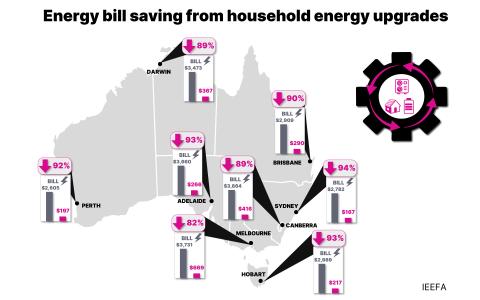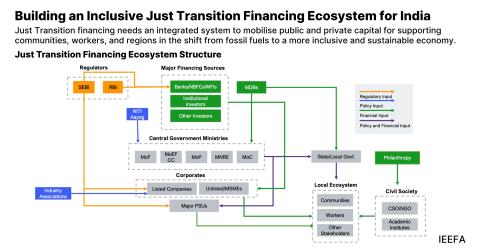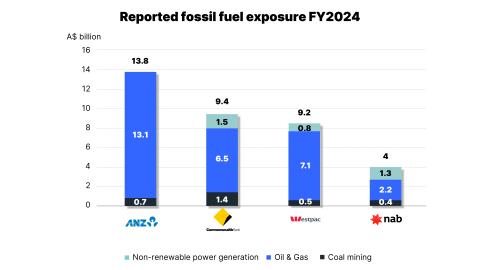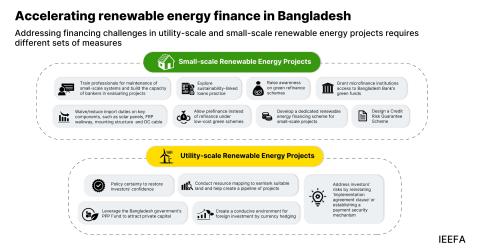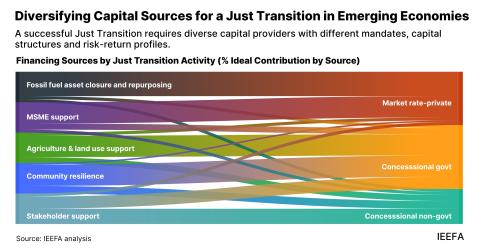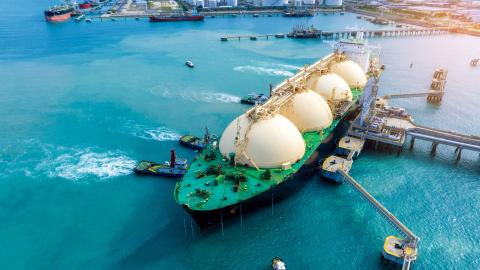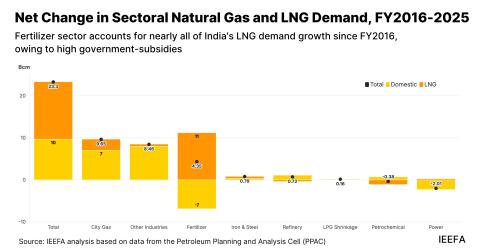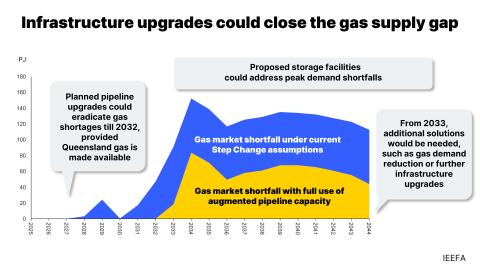IEEFA: Neglecting renewables could cost Indonesia’s energy edge, independence
Undergoing an energy transition is now inevitable for every country. Even amid the pandemic, the International Energy Agency (IEA) found that installed renewable energy had grown exponentially to reach to almost 200 gigawatts (GW) globally, with or without government support. In some markets, the energy transition accelerated at a pace that no one could have predicted.
No country is immune to the rapid disruption occurring in the global energy sector. New technological innovations in both supply and demand have changed the technical versus economic discourse. Renewables are now cheaper than any fossil fuel in most parts of the world.
Indonesia is no exception. The sharp decline in power demand due to slower economic growth has forced the State Electricity Company (PLN) to carefully rethink its investment plans. In the last semester, PLN began rebranding itself as a green(er) utility company through a number of so-called breakthrough initiatives. Going forward, the state-owned utility company is committed to providing clean and sustainable energy for Indonesia in line with government expectations, a measure likely to be attractive to ESG (environmental, social and governance) investors.
No country is immune to the rapid disruption occurring in the global energy sector
Despite this commitment, the government appears to favor the opposite strategy. While nations across the globe are competing to accelerate the development of inherently deflationary technologies in solar, wind and storage, the Indonesian government seems to be focusing on centuries-old technologies that have previously failed to gain market share.
THREE RECENT ENERGY INVESTMENT DECISIONS WITH GOVERNMENT BACKING require careful scrutiny as we enter 2021.
The first is the political push for coal downstreaming technology. The government wants to turn unsellable domestic low-rank coal into syngas (synthesis gas) to then be processed into methanol, dimethyl ether (DME), urea and other compounds. DME would then replace, to some extent, imported liquefied petroleum gas (LPG), a commodity that weighs on Indonesia’s trade deficit.
While coal gasification technology is not new, only very few have ever applied the technology because of its poor economic returns. In addition, the zero-royalty incentive written into the new Job Creation Omnibus Law and the Mining Law to boost DME production could undercut valuable public revenue. On the surface, DME production may appear to provide energy security and indeed profit, but a closer look reveals that it is very much prone to commodity price risk and is likely to put additional burdens on the public’s money.
A recent study by the Institute for Energy Economics and Financial Analysis (IEEFA) found that if the US$2 billion DME project initiated by state-owned PT Bukit Asam goes ahead, it would lose $377 million annually. This would exceed any savings made from reduced LPG imports by $19 million, assuming that global LPG prices remain below $470 per ton.
The government’s second plan to create a domestic market for local raw fuel products focuses on replacing imported diesel with B30, B50 and/or B100 biodiesel mix to capitalize on Indonesia’s palm oil production surplus. Unfortunately, this plan suffers from the same price risk as the proposed DME production projects.
SETTING ASIDE THE TECHNICAL CHALLENGES AND ENVIRONMENTAL IMPACTS of Indonesia’s vast and unsustainable oil palm plantations, the positive gain from biodiesel relies heavily on the crude palm oil (CPO) price and the imported diesel price of the corresponding period. Given the high biodiesel production cost, the economics will prevail only when the CPO price is low enough so that the price of biodiesel is more competitive than regular diesel. Unfortunately, this has been rarely the case. A dramatic slump in fuel prices this year made it even less economical for biodiesels.
Since the inception of the mandatory biodiesel program in 2015, Indonesia’s biodiesel development has relied heavily on subsidies funded by a levy on palm oil exports, provided through the controversial Oil Palm Plantation Fund Management Agency (BPDPKS). In 2020, additional stimulus of Rp 2.78 trillion (US$192 million) was allocated in the state budget to cover the increasing price difference between biodiesel and regular diesel.
Biodiesel production is likely to continue to be a huge financial burden on the Indonesian economy, obfuscating plans for energy security.
Indonesia is blessed with many energy options
The third energy proposition that calls for deeper scrutiny is PLN’s proposal to pursue cofiring at scale by converting 114 units at PLN’s existing 18 GW coal-fired power plants to accommodate 5-10 percent biomass cofiring.
This proposal looks appealing. Cofiring could potentially prolong the life of PLN’s old coal fleet, in addition to contributing fewer carbon emissions to the atmosphere. Yet, implementation is likely to be difficult and expensive due to the need for sustainable feedstock supply, coupled with the premium price of biomass. There is stiff competition for high-grade biomass like sawdust from countries like Japan and Korea. To move ahead with this proposal, a ceiling price for biomass would need to be set as a key to gauging biomass investors’ appetite in building the value-chain industry necessary to support it.
TECHNICALITIES ASIDE, COFIRING WOULD NOT BE RECEIVED WELL by ESG investors, as it extends the life of high-emissions coal plants. PLN is planning to issue green or sustainable bonds early this year, but what PLN considers “green” might be different from what investors expect. This could put a spoke in PLN’s wheel as it struggles to improve its poor financial health, made worse by COVID-19.
Indonesia is blessed with many energy options. The government’s concerted effort to use conventional domestic fuel sources, albeit with good intentions, is contrary to the global, technology-driven energy trends of the last 5 years. Indonesia has many renewable and sustainable fuel options that could be prioritized instead. For instance, solar and wind are free and have no related price risk.
When considering investments in increasingly obsolete energy infrastructure, the government should weigh the costs of achieving energy independence and the subsidies required to feed fuel sources of the past. Investing in cheaper, deflationary renewable energy projects is the better option for PLN and the government as we enter the recovery period.
Elrika Hamdi is an energy finance analyst at IEEFA
This article was first published in the Jakarta Post
Related items:
IEEFA Indonesia: PLN has ‘Green Ambition’ but is short on renewable energy credibility
IEEFA Indonesia: DME coal gasification project could lose US$377 million annually



